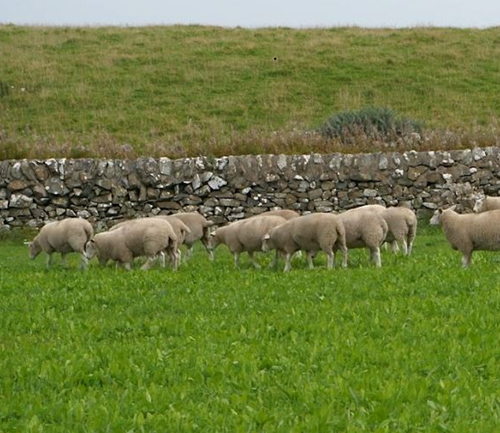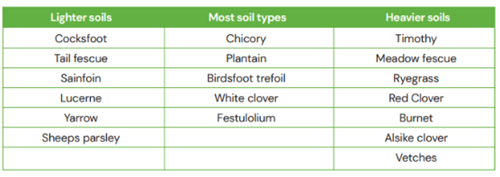Herbal Leys

To reduce feed costs, farms all around the country rely on grass for grazing their stock. However, this does depend on where the farm is with regard to their yield.
To reduce the variance of yield and quality of the grass crop, herbal leys could be incorporated into the re-seeding plan. Herbal leys are a mixture of plants and grasses which make up a ‘salad bowl’ type crop, more technically known as a multi-species sward.
These mixtures are designed to:
- Improve soil structure.
- Improve grass resilience in wet and dry periods.
- Legumes such as clover are there to fix nitrogen, which consequently leads to less fertiliser use. Legumes can fix around 180kg N/ha.
- Extends grazing season window.
- When utilised using rotational grazing, it results in good daily liveweight gain - this can be up to 0.7-1.6kg/day.
- Benefits biodiversity (increases earth worms) and carbon sequestration.
Some species have anthelmintic properties such as Tannins, so less need for wormers. This also reduces bloat in livestock. These include:
- Sainfoin
- Chicory
- Birdsfoot Trefoil
Managing herbal leys is different from a regular grass sward. Establishing the new mix will vary in success rate. A general rule is to use the species which will suit soil types on the farm.
- Lighter soils suit deep-rooted species.
- Heavier soils suit species that prefer moisture and fertility.
Below is a table from AHDB showing species and their preferred soil type.

Managing the sward to maximise output is to rotationally graze it on a 28–38-day rotation. This will not allow the chicory to grow to the ‘woody’ stage, which would require mowing. Livestock may take some time to get a taste for the sward, as it can be more bitter than the sweet ryegrass they are used to.
To silage this crop it is helpful to cut when the crop is not stemmy. This is when the plants are most digestible. Additives would be helpful to improve fermentation due to the high nutrient and low sugar content, which makes fermentation more difficult to achieve. Dry matter (DM) targets are 28-32% DM for clamp silage and 35-45% for baled silage.
Five top tips for choosing your herbal ley
- Decide your soil type and pick the correct plants for your farm.
- Less is more – don’t over complicate your mixture.
- Graze cleanly to encourage persistence and diversity of species.
- Set up your grazing system – rotational, mob, paddock or strip grazing.
- Trial and error – don’t give up at the first hurdle each farm and system is different.
Helen Cowie, Consultant, Helen.Cowie@sac.co.uk

Unearthed is the exclusive SAC Consulting members' monthly newsletter. Unearthed offers insights and tips from our experts on what we think is in store for farming and crofting in the coming months in order to protect and enhance your business.
Posted by Unearthed News on 24/09/2024
